"Did you know that over 60% of dog owners report fewer behavior issues after expert crate training for dogs? Explore how this practical approach can transform your pet’s well-being and your daily routine."
Are you tired of chewed shoes, nighttime barking, or a puppy or dog that just can’t settle? Crate training for dogs has helped thousands of people find reliable solutions—often with surprisingly quick results. With research-backed techniques and easy-to-follow steps, every dog owner can enjoy a happier home and a more confident pet. In this guide, you’ll dive deep into the essentials of crate training, answer top questions like “What is the 2 1 rule for crate training?” and discover how to tailor success for any adult dog, puppy or dog .
Understanding Crate Training for Dogs: Dispelling Common Myths
If you’ve ever wondered whether crate training for dogs is cruel or unnecessary, you’re not alone. Many myths surround this topic, but when practiced the right way, crate training provides invaluable security for your pet and convenience for you. A well-selected dog crate is not a prison—it becomes a den-like safe place , tapping into your dog’s natural instinct to seek out cozy, protected spaces. Dogs that are properly crate trained tend to have fewer behavioral problems , less separation anxiety, and adapt more readily to new environments, including travel and boarding.
-
Discover the purpose and primary benefits of crate training for dogs, including reduced anxiety, improved safety, and easier housebreaking.
Crate training supports essential dog training milestones, offering a structured method for housebreaking and providing a peaceful retreat when the hustle and bustle of daily life overwhelms your companion. It’s vital, though, to remember that a crate must never be used as punishment. Instead, view it as your dog's private sanctuary—a place where positive associations flourish, and a sense of safety grows stronger every day.
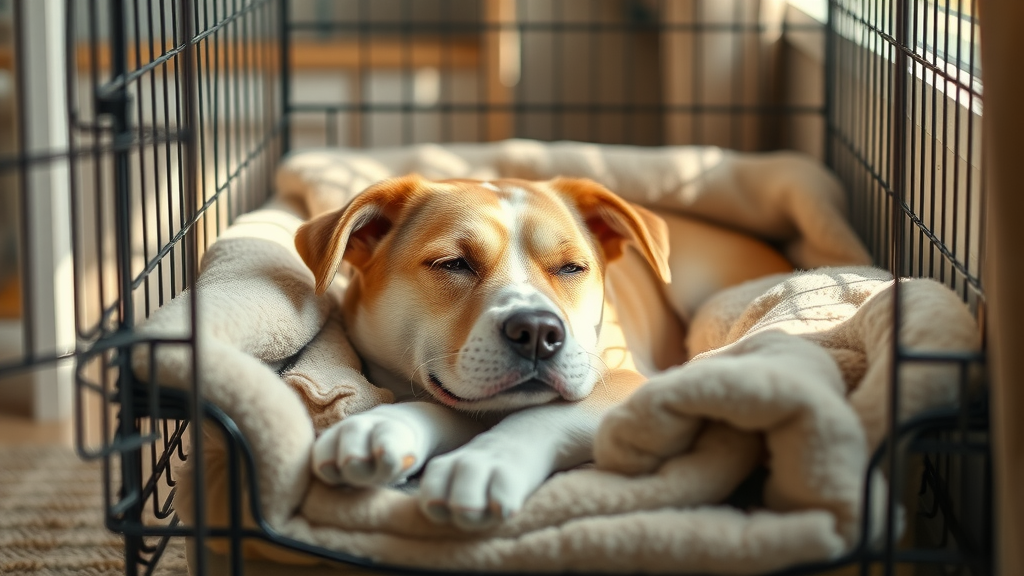
Why Crate Training for Dogs Matters: Key Benefits Backed by Research
-
Building positive associations with the dog crate
-
Supporting dog training for puppies and adult dogs
-
Preventing destructive behaviors
-
Facilitating safe travel and boarding
The science behind crate training for dogs is strong. Creating a safe space for your dog addresses core canine needs: security, routine, and boundaries. When properly introduced, the crate becomes a positive association —a place your puppy or dog is happy to retreat to after play or when tired. Numerous studies emphasize how controlled crating helps prevent separation anxiety , curbs destructive chewing, and supports more successful potty training.
For pet parents who travel or need to board, a crate-trained dog adapts significantly faster to changes in environment and routine. Dog crates are integral to safe travel , keeping your furry friend secure during car rides or vet visits. With the right approach, both puppies and any adult dog can learn to view their crate as a source of comfort and consistency—a foundation for behavior and wellness.
|
|
|
|
Comparing Crate Training for Dogs: Puppies vs. Adult Dogs |
|
Age |
Training Approach |
Expected Timeline |
Tips |
|---|---|---|---|
|
Puppy |
Incremental, rewards-based |
2-4 weeks |
Use toys, short sessions |
|
Adult Dog |
Gentle, patient, acclimatization |
4-6 weeks+ |
Go slow, address anxiety |
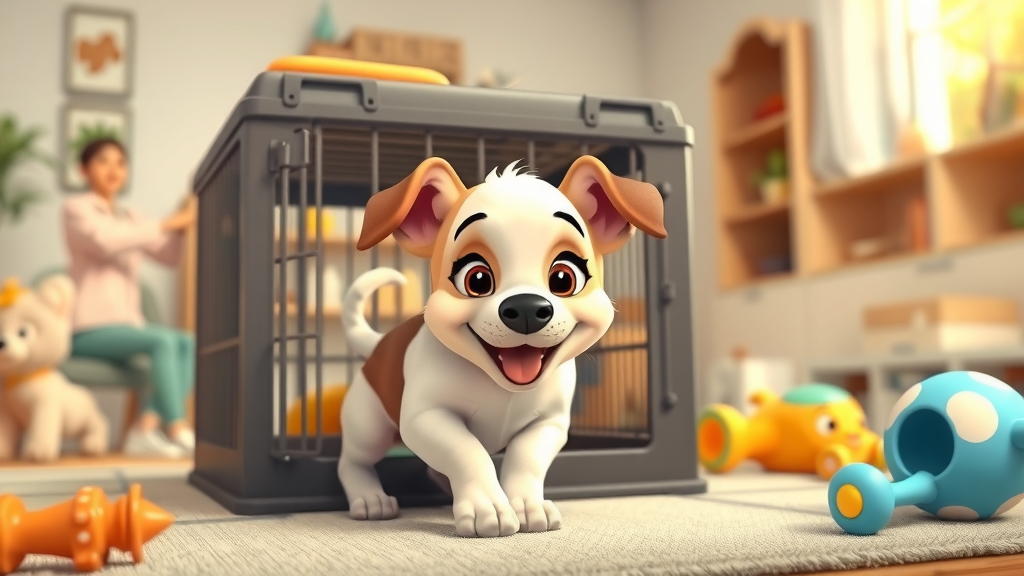
Getting Started with Crate Training for Dogs: Essentials & Equipment
-
Choosing the right dog crate size
-
Recommended crate types and materials
-
Setting up a safe, inviting crate environment
Successful crate training for dogs starts long before you introduce your dog to their crate. Begin by choosing the ideal dog crate : it should be large enough for your dog to stand, turn around, and lie down comfortably, but not so big that potty accidents become tempting. Options include wire, plastic, soft-sided, and heavy-duty crates, each offering distinct advantages—wire for ventilation, plastic for privacy, and soft-sided for portability. If you’re not sure which to pick, opt for quality construction and durability.
Making your crate inviting is key. Add a soft bed, safe chew toys, and a blanket that smells like home. Position the crate in a quiet room but not isolated from family “action”—dogs thrive when they feel included. Remember, crate your dog during regular meals and short periods so they associate this space with positive, everyday experiences.
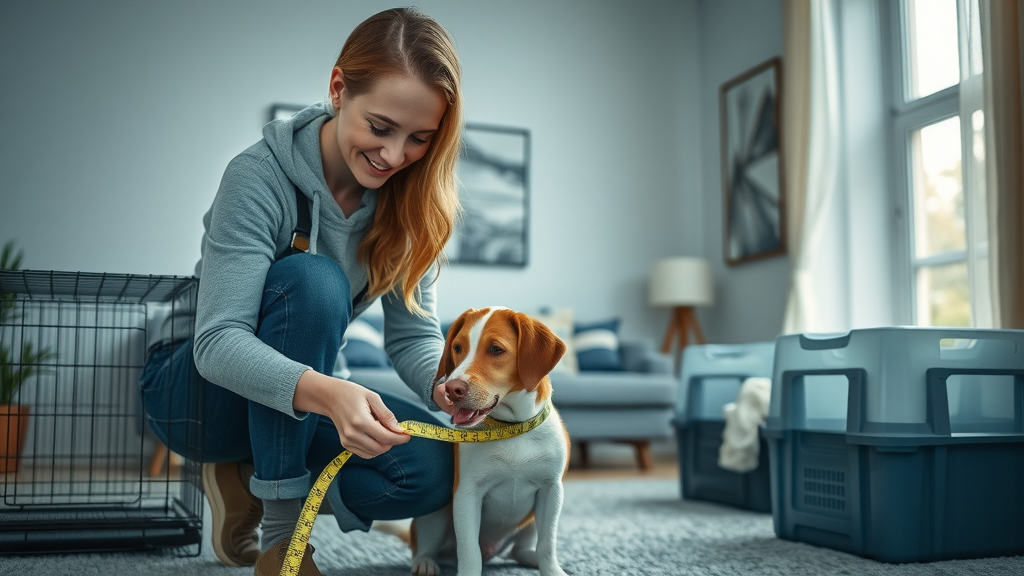
Step-by-Step Guide: How to Crate Train Your Dog Effectively
-
Introducing the crate your dog will use
-
Encouraging dog crate exploration
-
Closing the door open and gradually increasing time inside
-
Building duration and stamina
-
Managing crate training during different daily routines
To crate train successfully, introduce the crate as a non-threatening, rewarding spot. Let your dog sniff and explore it on their terms for short periods, using treats and gentle encouragement to create a positive association . Once they enter willingly, feed them regular meals inside—this establishes routine and builds comfort.
Start with short periods—just a few minutes at a time—before you close the door . Gradually increase the amount of time spent inside as your dog relaxes, watching carefully for signs of stress. The training process thrives on steady progress: always end a session on a happy note and keep the experience rewarding. Adapt crate use as part of everyday routines—naps, quiet time, travel, or even while you step out briefly—increasing duration as your dog’s confidence builds.
Crate Training for Dogs: Adapting for Puppies vs. Adult Dogs
-
Key differences in how to crate train an adult dog vs. a new puppy or dog
-
Setting realistic expectations for progress and setbacks
Every puppy or dog learns at their own pace. Puppies generally adjust to crating faster, especially when introduced in early weeks as part of routine dog training . For an adult dog , especially one with a difficult background or bad habits, patience and gentle acclimatization are essential. Don’t expect dogs to be “overnight successes”—instead, focus on gradual improvement, handling setbacks calmly. Puppy crate training focuses on short sessions, frequent potty breaks, and overnight comfort.
For adult dogs, build confidence with slower steps, extra reward, and time. Set realistic milestones: some dogs need weeks to fully embrace their crate, especially if they’ve never experienced a safe, enclosed space before. Consistency matters—establish regular feeding and potty breaks, gradually increase crate time, and always reinforce positive crate behavior. Remember, setbacks are normal, but with encouragement, even rescue or anxious dogs can thrive using their safe space .
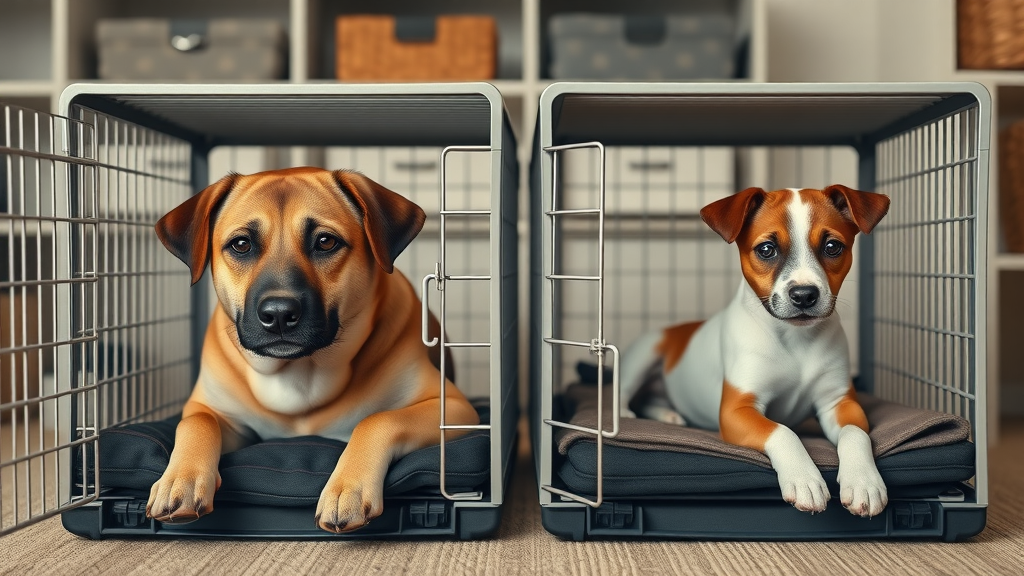
Crate Training an Adult Dog with Prior Challenges
-
Overcoming bad habits and fears
-
Rebuilding trust in the training process
If you’re crate training an adult dog with a history of fear, resistance, or prior negative associations, take extra care. Begin by opening the crate door and allowing your dog to approach at their own pace. Use treats, gentle praise, and soothing tones—never force them in. The training process may be slower, but even a hesitant rescue pup can rediscover trust with time, patience, and repetition. Each positive interaction is a step toward comfort.
Focus on rebuilding a positive association with the dog crate . Offer favorite toys, cozily line the crate with blankets, and use mealtime to encourage entries. Even if your dog only sniffs or steps partially inside, reward the attempt. Overcoming old fears doesn’t happen overnight, but consistent encouragement and short periods of voluntary crate time foster newfound confidence, helping to address both behavioral problems and create a safe space .

Managing Common Issues in Crate Training for Dogs
-
Separation anxiety and how crate training can support emotional regulation
-
Dealing with whining, barking, or reluctance to enter the dog crate
-
Preventing accidents and regression
Managing challenges is a normal part of crate training for dogs . One of the most common hurdles is separation anxiety —dogs may whine, bark, or resist time in the crate if they associate it with being left alone. To ease this response, ensure the crate always feels positive: offer treats, safe toys, and start with short, predictable absences before gradually lengthening time apart. Most importantly, never use the crate as punishment, which can increase fear or negative behavior.
For dogs reluctant to enter the crate or who show distress, revisit basics: keep sessions short, doors open, and reinforce every step forward. Accidents inside often signal the need for more frequent potty breaks, especially for puppies or newly adopted adult dogs unfamiliar with indoor rules. Consistency, patience, and always responding calmly to setbacks will help your dog embrace the crate as a reliable safe place in your home.
What to Do If Your Dog Hates the Crate
-
Troubleshooting behavioral resistance
-
When to seek help from certified dog training professionals
If your dog hates the crate , don’t lose hope. Begin by examining any negative associations—was the crate door closed too quickly, was your dog left too long, or was the crate used for punishment? Restart the process: open the door, allow sniffing, and offer new rewards for going near or inside. Try feeding meals or favorite treats in the crate with the door open , so your dog doesn't feel trapped. If problems persist beyond a few weeks, or your dog’s anxiety escalates, consulting a certified dog trainer or veterinary behaviorist can help unearth underlying issues and tailor solutions that build lasting confidence and calm.
Integrating Crate Training for Dogs Into Daily Life
-
Making the crate a positive, comforting space
-
Using crate your dog as part of travel, visits, and vet trips
-
Training process for leaving the door open safely when possible
True success means weaving crate training for dogs into your daily rhythm. Let your dog spend time in their crate throughout the day, not just when leaving home or at night—this solidifies their crate as a regular safe space . At every opportunity, toss in a treat or a new chew toy, especially during calm moments. For travel, car rides, or vet trips, a crate-trained dog will feel more secure, leading to less stress for both of you.
As confidence grows, practice leaving the door open while your dog is inside. This non-restrictive approach fosters freedom and strengthens voluntary crate use. Ultimately, the goal is that your dog chooses their crate when seeking comfort, quiet, or a break from busy surroundings. Integrating crating into all aspects of life—from travel to everyday downtime—sets up a lifetime of security and peace of mind.

"A well-executed crate training plan isn’t just about convenience—it’s about nurturing your dog’s confidence, security, and happiness."
Best Practices & Mistakes to Avoid in Crate Training for Dogs
Best Practices:
-
Keep the training process positive using treats and praise
-
Always allow potty breaks before crating
-
Gradually build crate time
Mistakes to Avoid:
-
Using the dog crate for punishment
-
Leaving the dog crated too long
-
Ignoring signs of separation anxiety
|
|
Crate Training for Dogs Do's and Don'ts |
|
Do's |
Don'ts |
|---|---|
|
Use positive reinforcement |
Force or yell at your dog |
|
Keep a routine |
Leave the crate dirty |
|
Monitor progress |
Use the crate as a timeout |
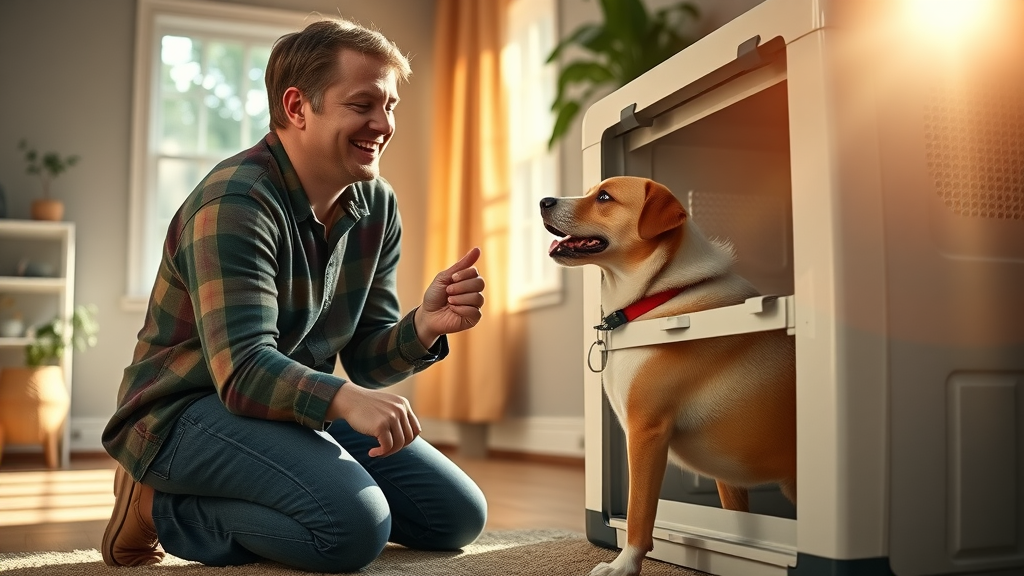
Crate Training for Dogs: Frequently Asked Questions
What is the 2 1 rule for crate training?
-
The 2 1 rule for crate training means a dog should only be crated for one hour per each month of age, up to a maximum of 8 hours for adults (e.g., a 2-month-old puppy for a maximum of 2 hours). Potty breaks should always be factored in, and young dogs need more frequent trips outside to prevent accidents and build reliable potty training habits.
Is it okay to crate a dog all night?
-
Yes, it’s okay to crate a dog overnight, provided your dog is comfortable, has gone potty before bedtime, and the crate is safe and cozy. Puppies may need one or more potty breaks during the night; most adult dogs can sleep 6-8 hours without needing out, as long as the crate size is correct and they don’t associate the crate with stress or negative experiences.
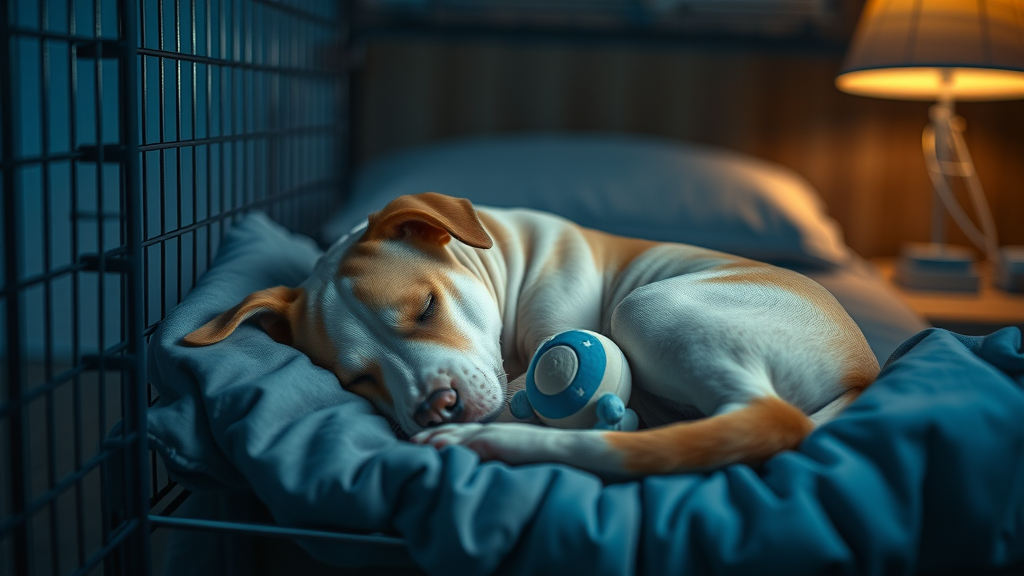
What is the fastest way to crate train a dog?
-
The fastest route to crate train your dog is to move in small, positive steps: introduce the crate with the door open , toss in treats, and allow short, voluntary visits. Then, gradually extend time with the crate door closed, rewarding every calm period. Be patient; rushing the dog training or using punishment will set progress back and can create lasting negative associations.
Do vets recommend crate training?
-
Most veterinarians recommend crating as long as it’s properly introduced and not used for long periods or as punishment. Vets cite significant benefits: physical safety, help with potty training , anxiety reduction, and support during injury recovery. Drawbacks only surface when the crate becomes a source of stress or used incorrectly, so always follow expert advice and best practices.

Expert Insights on Crate Training for Dogs
"Crate training for dogs is fundamentally about meeting your dog's instincts for safe, comfortable spaces. Done correctly, it’s a gift—for both dog and owner." — Certified Dog Trainer
Top professionals agree: crate training for dogs unlocks better routines, minimizes separation anxiety , and creates a pathway toward harmonious living. Whether you’re dealing with a feisty puppy or an anxious adult dog, the keys are consistency, positive reinforcement, and a clear understanding of your pet’s needs. Make the crate a lifelong safe space , and you’ll reap benefits far beyond fewer chewed shoes or clean carpets.
Selecting the Best Dog Crate for Crate Training
-
Comparing popular dog crate designs: wire, plastic, soft-sided, heavy duty
-
Sizing tips to avoid common crate training issues
-
Accessorizing for comfort and enrichment
When selecting a dog crate , compare styles: wire crates offer maximum airflow and visibility; plastic crates add coziness and solitude; soft-sided options work best for gentle, non-chewing dogs; and heavy-duty crates stand up to escape artists. Ensure the crate is neither too small nor too roomy—dogs naturally avoid soiling their safe space if the fit is right. For ultimate comfort and enrichment, accessorize with washable bedding, safe chews, and favorite toys.
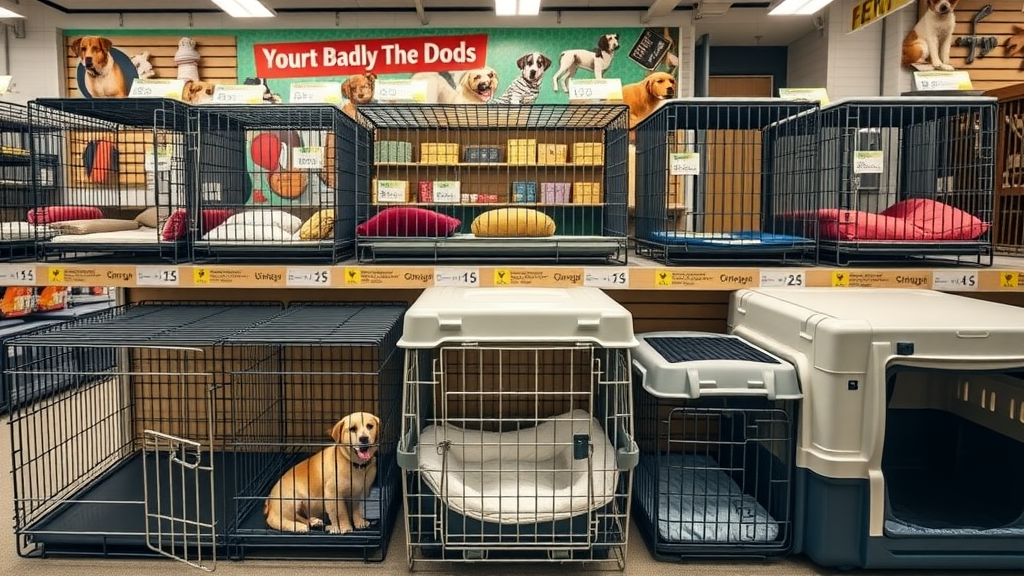
Transform Your Routine With Crate Training for Dogs: Next Steps
-
Key takeaways: Patience, positive reinforcement, and consistency lead to crate training success for puppies, adult dogs, and pet parents alike.
Caring for your pet just got easier. Get expert advice, product tips, and pet wellness updates delivered monthly. 🐾 Sign up today and stay one paw ahead.
Conclusion: With consistency, kindness, and the right techniques, crate training for dogs builds trust, enhances security, and paves the way for lifelong confidence in your pet—start today and see the difference.
Crate training is a valuable method to provide your dog with a safe and comfortable space, aiding in housebreaking and reducing anxiety. For a comprehensive understanding, consider the following resources:
-
“How to Crate Train Your Dog in Nine Easy Steps” : This guide from the American Kennel Club offers a step-by-step approach to crate training, emphasizing the importance of patience and positive reinforcement. ( akc.org )
-
“Crate Training: Tips for Dog Owners” : Provided by Pets N Vets, this article outlines practical tips for introducing and maintaining crate training, ensuring a positive experience for both you and your dog. ( petsnvets.org )
By exploring these resources, you’ll gain valuable insights and techniques to make crate training a successful and rewarding experience for your canine companion.
 Add Row
Add Row  Add
Add 




Write A Comment